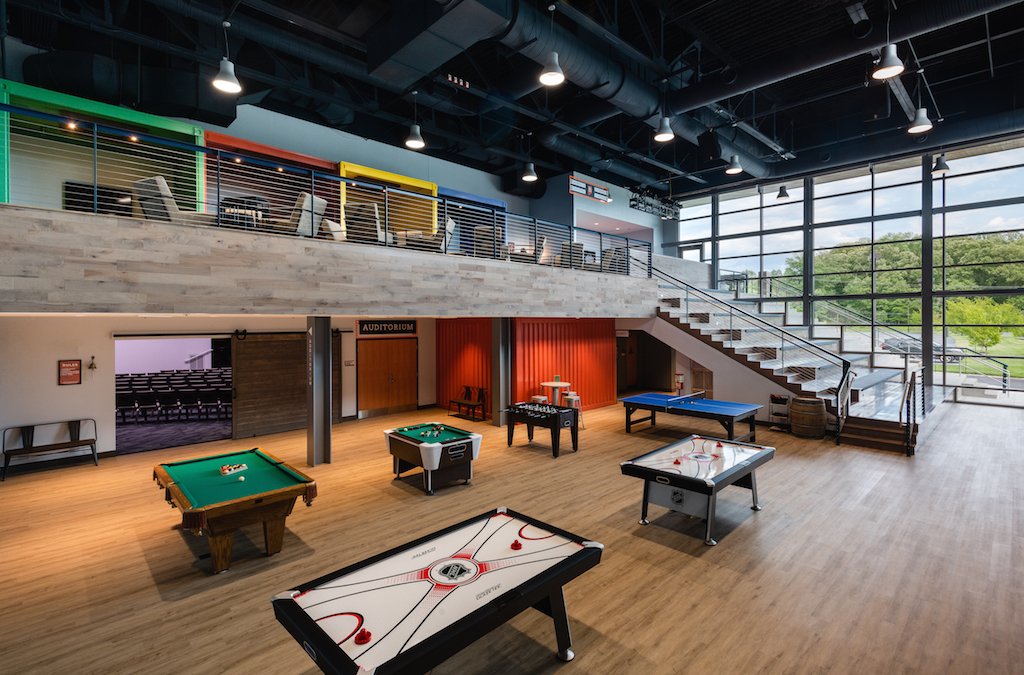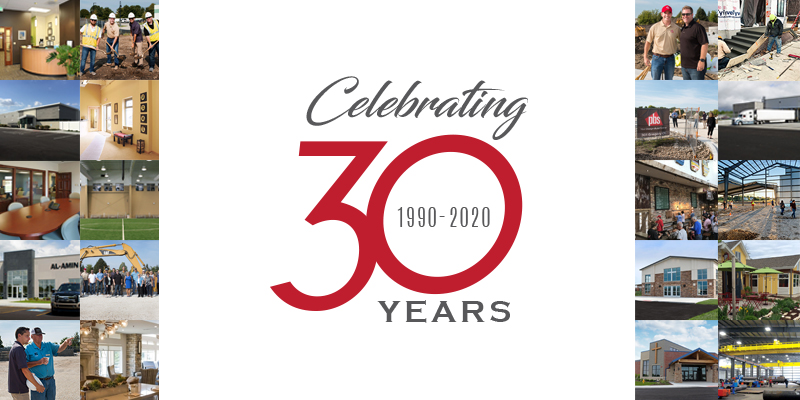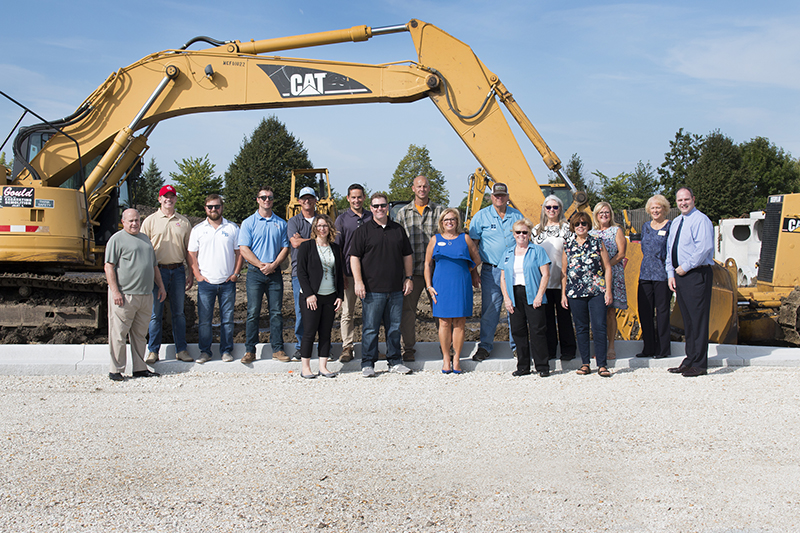
The Practice of Church Design-Build
by Carol Badaracco Padgett of Church.Design
“I’m here to talk about the connection of faith and works,” said keynote speaker Erik Cooper with The Stone Table based in Indianapolis. The Stone Table is a resource community for faith, work and missions. Cooper’s talk kicked off the 2019 annual meeting of the National Association of Church Design Builders (NACDB), Sept. 10-11, in the business offices of the Texas Rangers Stadium in Arlington, Texas.
NACDB is a nationwide association of construction-related specialists that consult, design and build churches.
Cooper’s talk encouraged the nearly 65 committed companies represented at the annual meeting to focus on design-build in a team framework operating on the concept of faith and works.
Church.Design spoke with NACDB Executive Director Meghan Williams about the organization’s purpose and mission–and where church design is headed moving forward.
Church.Design: When you break it down to its fundamental mission and function, what does the NACDB do?
Williams: We connect like-minded firms by educating and equipping them to serve and provide resources to faith-based markets and customers. Our vision is to integrate biblical values into the creation of facilities that positively impact the Kingdom of God.
Church.Design: How do architects, builders, interior designers and AV consultants benefit from being an NACDB member, on a business level?
Williams: Due to the continuing education and ‘iron that sharpens iron’ that occurs between each NACDB member, the personal and professional growth that members experience is always noted as their most valued benefit. In addition, they have the opportunity to highlight their craft and position themselves as experts in the field with other NACDB members and churches.
Church.Design: Are there special things that a church is looking for from a design and building partner, aside from what a secular company might look for?
Williams: NACDB’s standard of integrating biblical values into the creation of facilities is an outspoken principle behind every project we take on and one that many secular companies cannot compare.
One of NACDB’s core values is excellence, and this goes beyond the secular definition of excellence. NACDB defines excellence as ‘we are employed by God and He deserves our best in all we do.’ This is a value that churches can get behind because the focus is not on creating a building with beautiful features, the focus is on creating a space where people can meet and experience God.
Church.Design: How is NACDB preparing for the future of church design and building, and what does that look like in terms of your offerings to your members? In addition, what will your style of guidance look like as executive director?
Williams: We understand that every church is different. Many churches may look the same [to] an outsider, but the way in which the spaces are utilized for a church’s ministry varies from one facility to another. That is why it is so important to have a team of experienced designers and builders to come together to work with the church’s leadership to determine their ‘why’ before jumping into a building project.
As the executive director, it is my job to fulfill the association’s mission and vision while remaining the church’s ‘go-to resource’ for all church design and build needs. This means I need to be on top of recruiting and maintaining members of the highest standards of excellence, integrity and commitment to expanding the Kingdom of God.
Church.Design: What are the aspects of church design-build (putting the two disciplines together under one roof) that you believe are most beneficial to churches?
Williams: Our member Kurt Williams of T&W Church Solutions out of Indianapolis describes it this way, “Design-Build has continued to grow as a delivery system due to the simple fact that it protects churches from the unfortunate statistics and pain that the traditional approach of Design-Bid-Build produces, due to the lack of collaboration and adversarial alignment:
- 50% of churches have an expensive set of plans that they will never build … due primarily to initial budget bust
- The average cost overrun on a church project is in excess of 25% from the original bid
- Construction is still the second most litigated industry, behind medical
When the entire team (owner, designer, builder, key consultants and engineers) are at the table together, collaborating and seeking to find the best solution for the church, the creative solutions (that are buildable and economical) are boundless. Design-Build is truly a team effort.”
Church.Design: Are all your members structured as design-build firms, or are there standalone architecture and building firms?
Williams: Our membership covers several industries. We are structured with design-build firms, architecture firms, security specialists, sign and theming specialists, café vendors, marketing experts, audio/visual/lighting specialists, capital campaign consultants, church financing and law services.
[Again,] ‘iron sharpening iron.’ All of our members are vetted and board-approved, so we feel comfortable working together and recommending members to churches across the nation. We meet throughout the year to fellowship and discuss market trends and best practices. We offer a Certified Church Consultant program to our members to educate them on the building needs of the church. And we continually share information on how to best design and build for today’s church.
Church.Design: What does the future of church design look like to you, leading into 2020?
Williams: There are several directions we see churches taking with their design, according to Ravi Waldon of Waldon Studio Architects. Here’s a list he provides:
- We are seeing the old line denominational churches consolidating and either trying to renovate existing space to reflect a more contemporary worship attitude and/or dispose of old real estate.
- Security and design have really become a prime focus. Over time, these design elements will become more subtle and integrated into the design.
- Environmental graphics and interior design are becoming more sophisticated.
- We are seeing improvements from the relationship of the building to nature, further enhancing spaces for community and fellowship.
- Worship experiential design is increasingly important from the AVL technology utilization standpoint but at the same time, worship space design itself is returning to a more sacred space feeling–but in a modern way.
- In order to be more engaged in the community, churches continue to explore new ventures such as skilled care and independent senior living, affordable housing, adult day care or K-12 academies. These ventures develop a continued revenue stream given the expense of real estate in communities today.
- Churches in general are getting smaller in size. Mostly below 1,500 seats. A lot of this has to do with the trend to multisite. This allows for better community and less investment in large infrastructure.
- There has also been a turn towards a more mixed-use approach. Churches are becoming less insular in their engagement with their communities. They are starting to build facilities with the community in mind, instead of just creating space for their congregation.
Church.Design: Is there anything else you’d like to add?
Williams: Our [ultimate] goal is to help the church navigate the building process. Our members have hundreds of years of collaborative experience in the church building market. Each one of our members believes that the church building should be built around ministry. [Churches] have a mission, a vision and a purpose that is unique–and [they] should continue to focus on that throughout the building process.
The NACDB’s job is to show the different building methods, best practices and the ways [they] might be able to save money and connect to our board-approved, vetted members from across the country.
(Source: https://church.design/cover_stories/a-close-up-look-at-church-design-build/)





